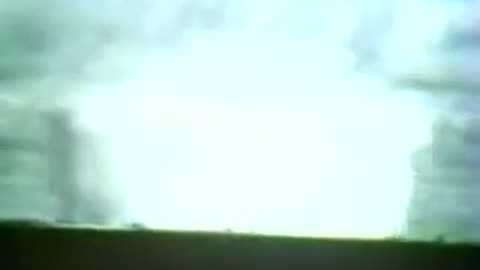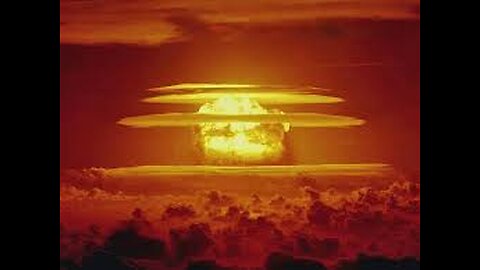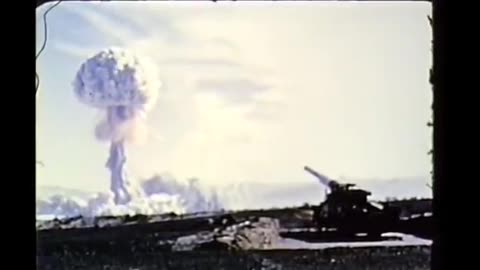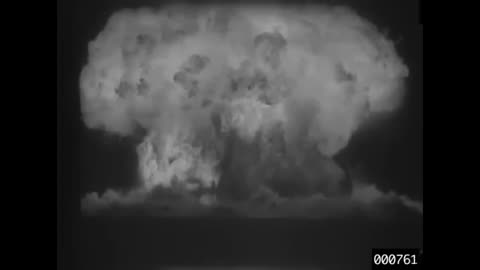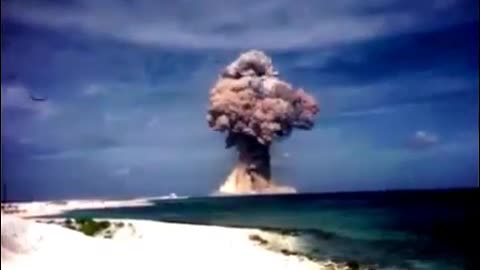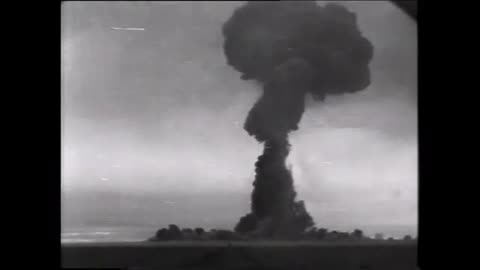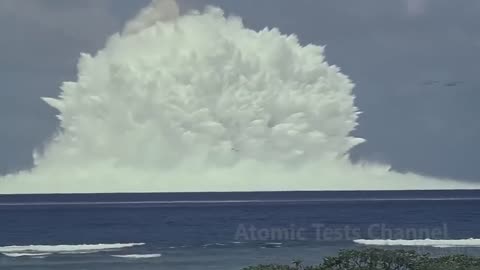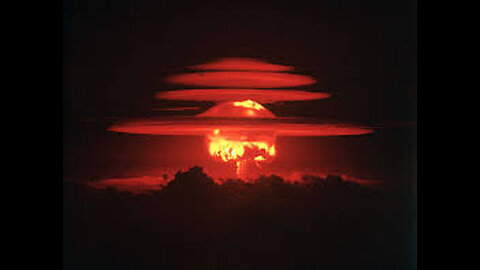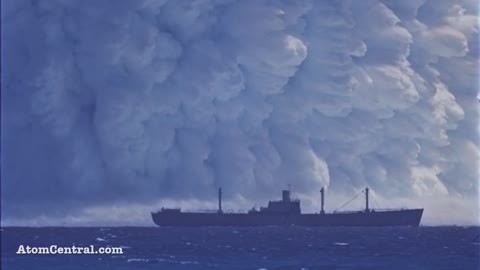Premium Only Content
This video is only available to Rumble Premium subscribers. Subscribe to
enjoy exclusive content and ad-free viewing.
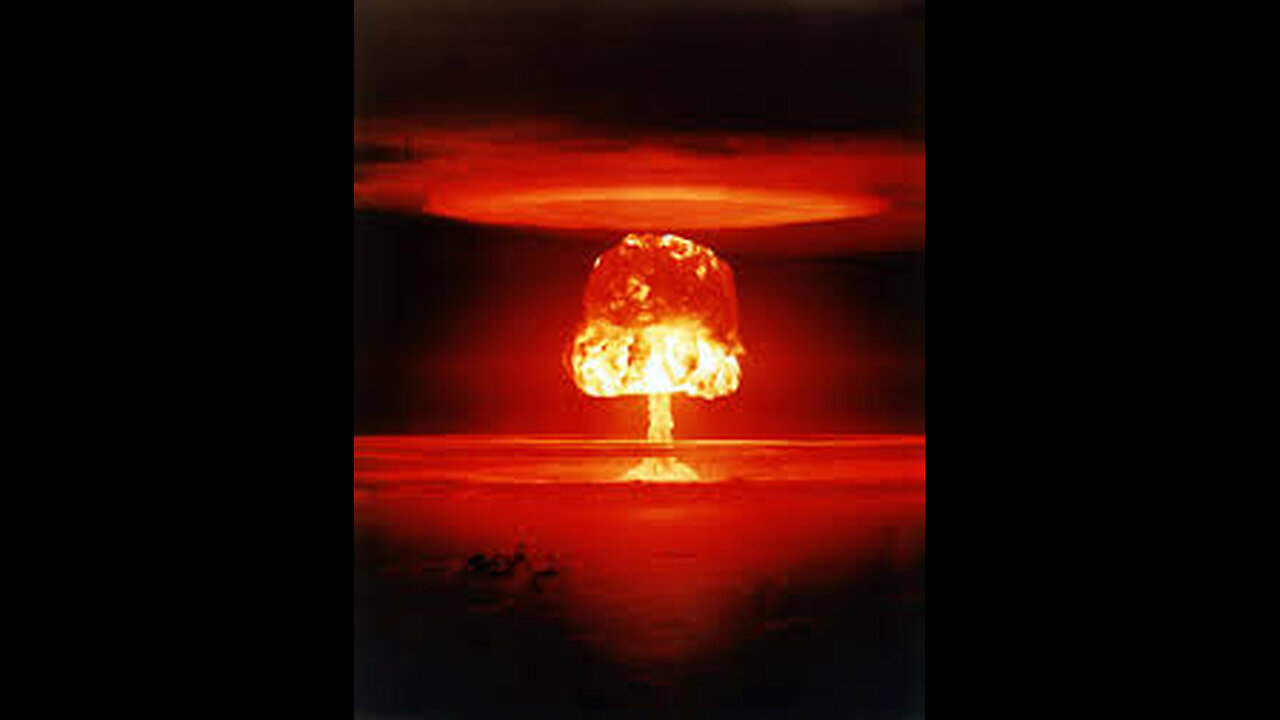
Nuclear Explosions
LargeExplosions
- 5 / 16
1
Underwater Nuclear Test - Project Crossroads - Baker Shot
Large Explosions
Project Crossroads was a series of two nuclear tests, Able and Baker, the first tests conducted at the Pacific Proving Ground, near the Bikini Atoll in the Marshall Islands. These were the fourth and fifth nuclear detonations in history, following the Trinity test in July 1945 and the two weapons dropped on Japan to end World War II.
The two bombs used in Crossroads were of the Fat Man configuration, very similar to the implosion-type weapons tested at Trinity and dropped on Nagasaki, Japan. It had a plutonium pit. The only other nuclear weapon available at the time was the uranium gun-type Little Boy, which was dropped on Hiroshima, Japan. The Fat Man was a more complex weapon than Little Boy, thus needing more testing to gain experimental data.
On July 24, 1946, the Baker shot was set off in the Bikini lagoon at a depth of about 90 feet with a yield of 21 kilotons. Two million tons of water were contained in the eruption and two million yards of sediment were removed from the lagoon floor. Nine ships were sunk.
1
comment
2
Atomic Weapons Tests: TRINITY through BUSTER-JANGLE
Large Explosions
Atomic Weapons Tests: TRINITY through BUSTER-JANGLE
This was a broad overview report to carefully qualified members of secret oversight committees of U.S. Congress, as well as a collective archive of the Armed Forces Special Weapons Project.
This film was declassified in 1997 after careful sanitization by experts to edit out secrets sensitive to technical information protected by the U.S. Department of Energy -- the successor to the Atomic Energy Commission -- and the U.S. Department of Defense.
Atomic Weapons Tests Trinity through Buster Jangle Vintage Atomic Bomb Film
1
comment
3
280mm Atomic Cannon - Nuclear Artillery Test - 1953
Large Explosions
The 280mm Atomic Cannon - Nuclear Artillery Test 1953
The cannon was transported by two specially designed tractors, both capable of independent steering in the manner of some extra-long fire engines. Each of the tractors was rated at 375 hp, and the somewhat awkward combination could achieve speeds of 35 miles an hour and negotiate right turns on 28 ft wide, paved or packed roads. The artillery piece could be unlimbered in 15 minutes and then returned to traveling configuration in 15 minutes more.
On May 25, 1953 at 8:30am local time, the Atomic Cannon was tested at Nevada Test Site (specifically Frenchman Flat) as part of the Upshot-Knothole series of nuclear tests.
8
comments
4
Nuclear Test - Tesla 7 kiloton - Operation Teapot - March 1, 1955
Large Explosions
Tesla 7 kiloton shot - Operation Teapot (March 1st, 1955)
Operation Teapot was a series of fourteen nuclear test explosions conducted at the Nevada Test Site in the first half of 1955. It was preceded by Operation Castle, and followed by Operation Wigwam
Operation Castle Nuclear Test Report (1954)
Large Explosions
Operation Castle Nuclear Test Report (1954
6
Nuclear Test - NUTMEG - 25.1 kiloton - Operation Hardtack 1 - May 21, 1958
Large Explosions
NUTMEG - 25.1 kiloton - Operation Hardtack 1 (May 21, 1958)
1
comment
7
Nuclear Test Operation Hardtack 1 Juniper July 22 1958
Large Explosions
Operation Hardtack 1 Juniper 53070. 65 Kt on a barge from 12 feet altitude.
July 22 1958
Nuclear weapons tests are experiments carried out to determine the performance, yield, and effects of nuclear weapons. Testing nuclear weapons offers practical information about how the weapons function, how detonations are affected by different conditions, and how personnel, structures, and equipment are affected when subjected to nuclear explosions. However, nuclear testing has often been used as an indicator of scientific and military strength. Many tests have been overtly political in their intention; most nuclear weapons states publicly declared their nuclear status through a nuclear test
8
First Soviet atomic bomb test 1949
Large Explosions
On 29 August 1949, the Soviet Union secretly conducted its first successful weapon test (First Lightning, based on the American "Fat Man" design) at the Semipalatinsk-21 in Kazakhstan. Stalin alongside Soviet political officials and scientists were elated at the successful test.
2
comments
9
Underwater Wahoo atomic bomb explosion of 1958
Large Explosions
Underwater Wahoo atomic bomb explosion of 1958
3
comments
10
Castle Yankee Nuclear Test 1954
Large Explosions
Information
Country
United States
Test series
Operation Castle
Test site
Bikini Atoll
Date
May 5, 1954
Test type
Atmospheric
Yield
13.5 Mt
1
comment
11
RDS-37 Soviet hydrogen bomb test (1955)
Large Explosions
RDS-37 Soviet hydrogen bomb test (1955)
2
comments
12
A Time-Lapse Map of Every Nuclear Explosion or Test Since 1945
Large Explosions
Time-lapse map of the 2053 nuclear explosions which have taken place between 1945 and 1998, beginning with the Manhattan Project's "Trinity" test near Los Alamos and concluding with Pakistan’s nuclear test
Since then there has been 3 by North Korea
A nuclear explosion is an explosion that occurs as a result of the rapid release of energy from a high-speed nuclear reaction. The driving reaction may be nuclear fission or nuclear fusion or a multi-stage cascading combination of the two, though to date all fusion-based weapons have used a fission device to initiate fusion, and a pure fusion weapon remains a hypothetical device. Nuclear explosions are used in nuclear weapons and nuclear testing.
Nuclear weapons tests are experiments carried out to determine the performance, yield, and effects of nuclear weapons. Testing nuclear weapons offers practical information about how the weapons function, how detonations are affected by different conditions, and how personnel, structures, and equipment are affected when subjected to nuclear explosions. However, nuclear testing has often been used as an indicator of scientific and military strength. Many tests have been overtly political in their intention; most nuclear weapons states publicly declared their nuclear status through a nuclear test
2
comments
13
Castle Bravo Nuclear Test 1954 15 Megatons
Large Explosions
Castle Bravo was the first in a series of high-yield thermonuclear weapon design tests conducted by the United States at Bikini Atoll, Marshall Islands, as part of Operation Castle. Detonated on March 1, 1954, the device was the most powerful nuclear device detonated by the United States and its first lithium deuteride fueled thermonuclear weapon. Castle Bravo's yield was 15 megatons of TNT, 2.5 times the predicted 6.0 megatons, due to unforeseen additional reactions involving lithium-7,which led to the unexpected radioactive contamination of areas to the east of Bikini Atoll. At the time, it was the most powerful artificial explosion in history.
Nuclear weapon tests are experiments carried out to determine the performance, yield, and effects of nuclear weapons. Testing a nuclear weapon offers practical information about how the weapons function, how detonations are affected by different conditions, and how personnel, structures, and equipment are affected when subjected to nuclear explosions. However, nuclear testing has often been used as an indicator of scientific and military strength. Many tests have been overtly political in their intention; most nuclear weapons states publicly declared their nuclear status through a nuclear test
A nuclear weapon is an explosive device that derives its destructive force from nuclear reactions, either fission (fission bomb) or a combination of fission and fusion reactions (thermonuclear bomb), producing a nuclear explosion. Both bomb types release large quantities of energy from relatively small amounts of matter.
1
comment
14
UNCUT FOOTAGE OF UNDERWATER ATOMIC BLAST 1958
Large Explosions
The test (code name: Wahoo), took place on May 16, 1958. The detonation point was the open ocean near Enewetak Atoll in the Marshall Islands. According to the Nuclear Weapons Archive, the Wahoo device was detonated at a depth of 500 feet in 3,200 feet of water.
15
Nagasaki bomb 1945
Large Explosions
Atom bomb "Fat Man" destroys Nagasaki as viewed from a B-29 Superfortress accompanying the Bockscar flown by Major Charles W
16
Underwater Nuclear Explosion
Large Explosions
Los Alamos and Dept of Defense nuclear weapons explosion shallow depth underwater shot (150 ft.), June 8, 1958, at Enewetak with a yield of 8 kilotons
Operation Castle Nuclear Test Report (1954)
Loading comments...
-
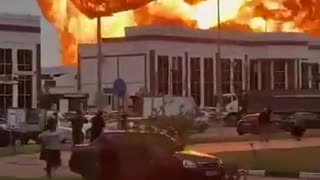 0:27
0:27
Large Explosions
1 month agoMassive explosion at a gas station in Grozny Russia
235 -
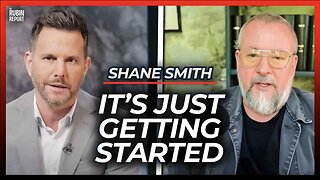 34:24
34:24
The Rubin Report
20 hours agoFormer CEO: The Aftermath of Vice Media & What's Next for Mainstream Media | Shane Smith
58.2K15 -

tacetmort3m
1 day ago🔴 LIVE - BECOMING THE UNTOUCHABLE (RADIATION WHO?) - STALKER 2 - PART 3
17.1K4 -
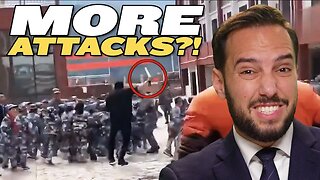 16:05
16:05
China Uncensored
16 hours agoAnother Car-Ramming Strikes Outside a Chinese School!
11.6K12 -
 9:26
9:26
Dr. Nick Zyrowski
7 hours agoAnti Inflammatory Foods | You MUST Eat These!
8.51K2 -
 15:40
15:40
Bearing
3 hours agoEnd Stage Trump Derangement | Rosie O'Donnell is NOT Doing Well 😬
9.82K48 -
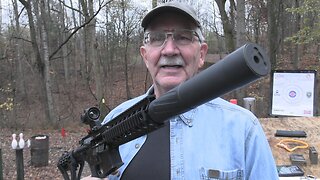 35:19
35:19
hickok45
6 hours agoSunday Shoot-a-Round # 256
18.8K22 -
 41:20
41:20
PMG
18 hours ago $0.68 earned"The No B.S. Guide to Getting Your Life together in 2024!"
11.9K -
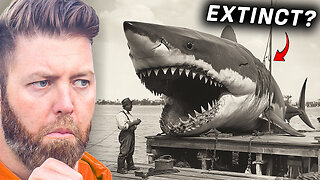 14:22
14:22
Forrest Galante
17 hours agoDoes The Megalodon Still Exist?
104K29 -
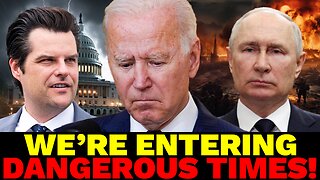 26:48
26:48
Stephen Gardner
12 hours ago🔥BREAKING: Vladimir Putin JUST shocked NATO | Will only negotiate with Trump!
147K359
